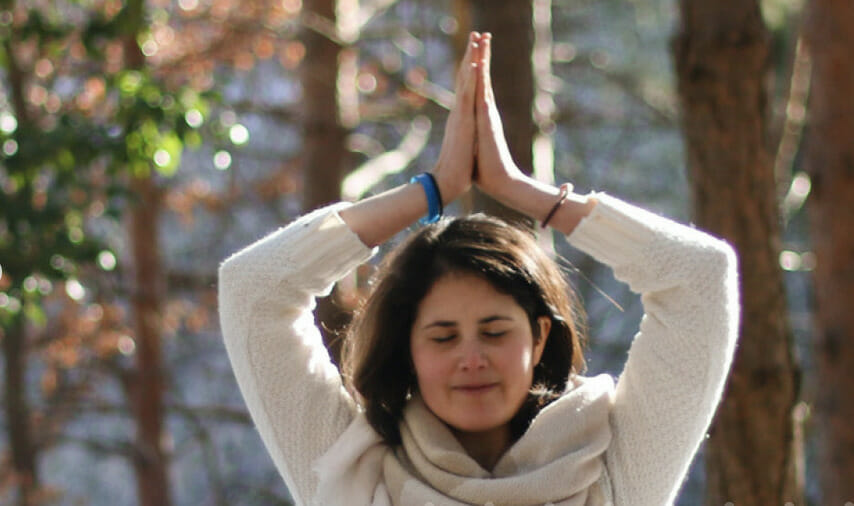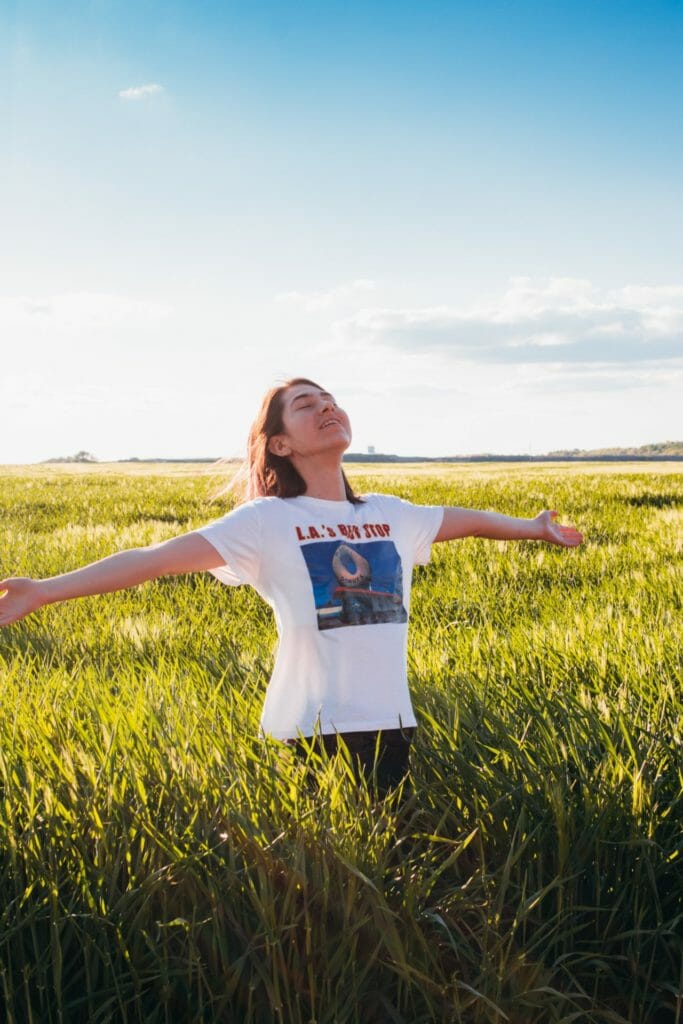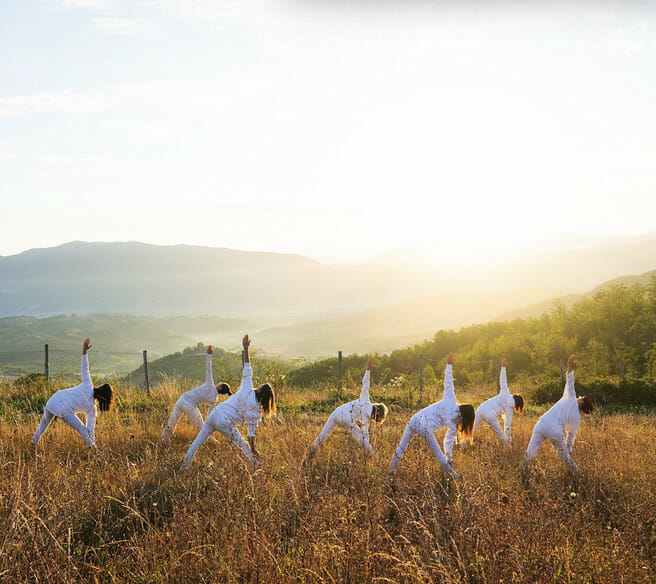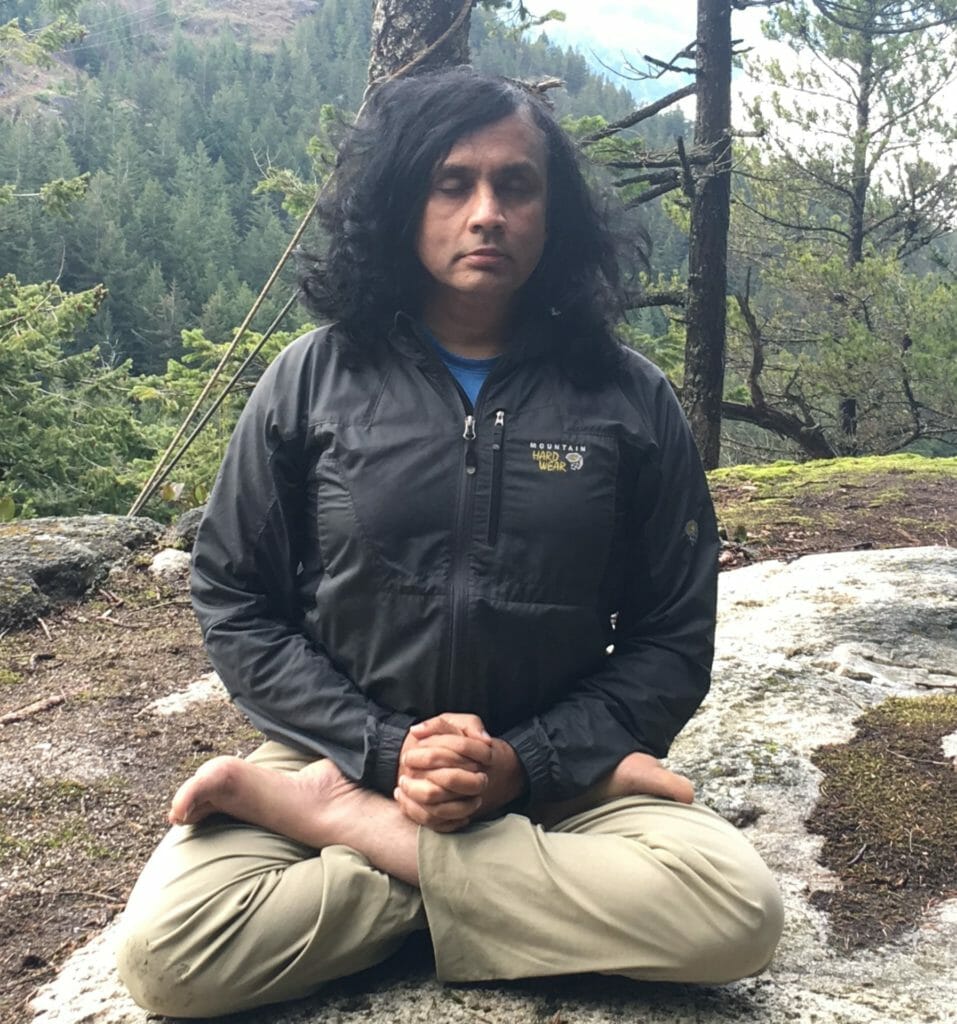
By Murali Venkatrao PhD
A good friend of mine recently told me that she practices Yoga because “it is a great work-out”. She likes her yoga teacher because she “makes me sweat”. Many people are attracted to Yoga because it can be practiced as an exercise; and as a result, brings with it all the benefits of exercise. But in reality, Yoga and exercise are different in three fundamental ways:

Work-out vs work-in
During exercise we aspire to increase our heart rate, to lift heavier weights, and so on. The goal is to produce “beneficial stress” in the body. As a result, at the end of our workout, the body relaxes: our resting heart rate decreases, blood pressure comes down, and we are able to sleep better. During Yoga, we aspire to stay calm and peaceful throughout the practice. Even during hard poses, we continue to breathe deeply, and use this to stretch deeper, and hold the pose for longer. Thus, instead of working out, we work in, deepening our focus with each pose. This enables the body to relax even more deeply and is thus more beneficial.
Role of the breath
During exercise, we use the breath to make our movements more efficient; during Yoga, we use movements to make our breath more efficient. The breath has the unique ability to both revitalize the body (we take a deep breath when we are tired or are about to do something physically demanding) and calm the mind (we take a deep breath when we are panicking, for example).
Yogis realized long time ago that a harmonious flow of breath was key to good health and mental well-being. This is why Yoga has such a wide range of benefits.


Body transcendence
In exercise, we work with the physical body with the goal of making it stronger, run faster, lift heavier weights, etc. In Yoga, we work with the physical body to transcend it. As Patanjali puts it in the Yoga Sutras: By reducing one’s natural tendency toward restlessness, and by visualizing infinity, true posture is acquired. (2:47)
Tips for deepening your Yoga practice
1. Instead of doing your yoga poses as a work-out, try to “relax in the midst of effort” (as Swami Kriyananda puts it). Aspire to do the pose deeply, but never to the point of strain. Try to do the hard poses but do them calmly and with confidence. You will notice that after a few poses, the body and mind become relaxed, and you will have greater endurance.
2. Keep your breath harmonious – i.e., the inhalation should be the same length as exhalation. You won’t always be able to breathe deeply, for example in backbends, but you can always breathe harmoniously. You will notice that when done this way, the effects of your Yoga practice will last the entire day.
3. Once you get into the pose, stop trying to do the pose, and simply be in the pose. Go beyond the physical body and feel the pose in your heart. Affirmations are a wonderful way of tuning into this feeling. By transcending your body in this way, you will be able to access higher states of consciousness.
Let us recall these words from Paramhansa Yogananda: The whole purpose of true exercise is to awaken that inner source of energy, which we have ignored all our lives.
Blessings on your practice,
Murali Venkatrao

Murali Venkatrao PhD,
is the Director of Yoga Teacher Training at the Ananda Institute of Living Yoga
